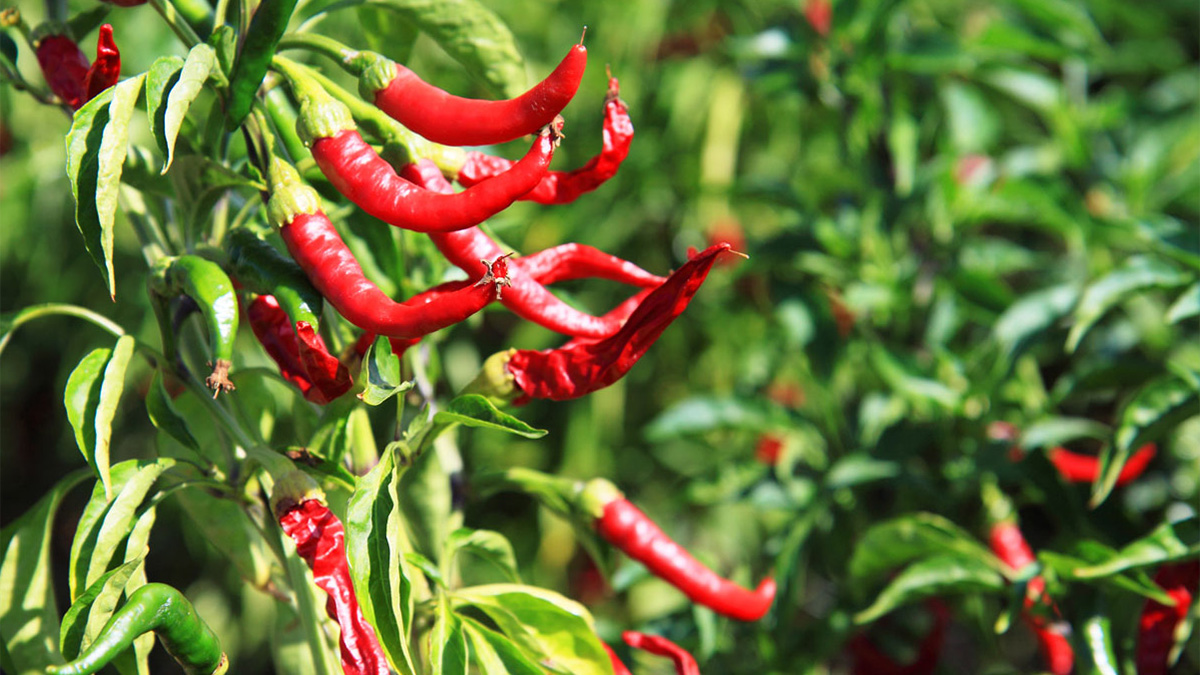Grow Your Own Heat: Top Chili Varieties for Spice Lovers

If you love bold, spicy flavors, growing your own chilies is the perfect way to heat up your garden and your kitchen. Homegrown chilies offer unmatched freshness, a wider range of flavors, and the satisfaction of harvesting peppers you cannot always find in stores. Whether you are after mild heat or extreme fire, there is a perfect chili variety for you.
Related: Can You Control the Heat? How Growing Conditions Affect Chili Spice Levels
Why grow your own chilies
Growing your own chilies is one of the best ways to enjoy a broader range of flavors and heat levels than you can usually find at the grocery store. Homegrown chilies often have richer taste and fresher heat, which can transform homemade salsas, sauces, and marinades. Plus, tending your own plants allows you to experiment with rare or specialty varieties that are harder to find commercially.
When you grow your own, you also control how the plants are raised. You can avoid pesticides, fine-tune watering and feeding schedules, and pick the peppers at peak ripeness for the best flavor. For spice lovers, growing chilies is a rewarding adventure that brings excitement right into the garden.
Understanding chili heat: the Scoville scale
The heat of chilies is measured using the Scoville scale, which ranks peppers based on their capsaicin content. Capsaicin is the natural compound responsible for the spicy sensation, and its concentration can vary widely from one variety to another. Mild chilies like bell peppers register at zero, while some of the hottest varieties reach over one million Scoville heat units.
Understanding the Scoville scale helps you choose chilies that match your preferred spice level. Whether you like a gentle kick or a fiery punch, there is a variety out there for you. It is also helpful for planning how you will use different chilies in cooking, depending on the amount of heat you want to deliver.
Best chili varieties for spice lovers
Habanero
Habaneros are known for their searing heat and sweet, fruity undertones. They produce small lantern-shaped fruits that ripen to bright orange or red. These chilies are perfect for making hot sauces, spicy jams, or adding intense heat to Caribbean and Latin dishes.
Thai chili (Bird’s Eye)
Thai chilies, often called Bird’s Eye chilies, are small but incredibly potent. They pack a sharp heat that is essential in many Southeast Asian recipes like curries and spicy stir-fries. The plants are highly productive, making them a great choice for gardeners looking for big yields from compact spaces.
Cayenne
Cayenne peppers are a popular choice because they offer moderate heat with a versatile flavor. Their long, slender fruits are often dried and ground into the familiar cayenne powder used in cooking. Fresh cayenne peppers are excellent for adding a spicy kick to dishes or for making homemade hot sauces.
Ghost pepper (Bhut Jolokia)
For those who truly crave extreme heat, the ghost pepper is a thrilling challenge. Originally from India, ghost peppers were once considered the hottest peppers in the world. They are best used sparingly in recipes or fermented into sauces for a slow-building, intense heat that spice enthusiasts appreciate.
Serrano
Serrano peppers provide a vibrant, fresh heat that is hotter than jalapeños but still manageable for most spice lovers. They are great for making salsas, especially when you want a fresher, crisper flavor profile. Serrano plants are also hardy and produce plenty of fruit throughout the season.
Scotch Bonnet
Scotch Bonnets are a Caribbean favorite, loved for their heat and unique fruity flavor. They are often used in jerk seasoning, hot sauces, and stews. Like habaneros, they bring both fire and complexity to the plate, making them a must-try for anyone who enjoys bold, spicy food.
Jalapeño
Jalapeños are one of the most accessible hot peppers for beginner gardeners. They offer a mild to moderate heat that works well for grilling, stuffing, or adding to everyday dishes. Jalapeño plants are easy to grow, and they produce a generous harvest with minimal fuss.
Tips for growing hot chilies successfully
Starting chilies from seed indoors gives you a head start and allows for a longer growing season, especially in cooler climates. Chilies love warmth and bright light, so be sure to provide a sunny window or supplemental grow lights during early growth. Germination can be slow, so patience is key.
Once transplanted outdoors, chilies thrive in well-draining soil with plenty of sunlight. Regular watering helps establish healthy plants, but it is important to avoid waterlogged soil which can lead to root issues. Feeding with a balanced fertilizer every few weeks supports strong growth and high yields.
Supporting your chili plants with stakes or small cages can prevent branches from breaking under the weight of fruit. Pruning early growth can encourage bushier plants and more blooms. With a little attention, your chili plants will reward you with a fiery and colorful harvest.
Harvesting and using your chilies
Chilies can be harvested once they reach their mature color, which varies by variety. Some peppers are picked green for a milder taste, while others are left to ripen fully for maximum heat and flavor. Always use gloves when handling very hot varieties to avoid skin irritation.
Fresh chilies can be used immediately in cooking or preserved by drying, freezing, or fermenting. Drying chilies intensifies their flavor and makes them easy to store for later use in powders or flakes. Fermented hot sauces are another exciting way to enjoy and preserve your spicy harvest.
Whether you like your chilies fresh, dried, or blended into homemade sauces, growing your own peppers lets you enjoy intense flavors that store-bought options can rarely match. Gardening for heat brings a fun, delicious challenge that spice lovers will savor all season long.
Conclusion
Growing chilies at home is a fun and flavorful journey for any spice lover. With the right varieties, a little care, and some patience, you can enjoy a colorful harvest packed with heat and personality. Whether you grill them fresh, dry them for later, or turn them into your own hot sauce, your garden can be a true source of fiery inspiration.
